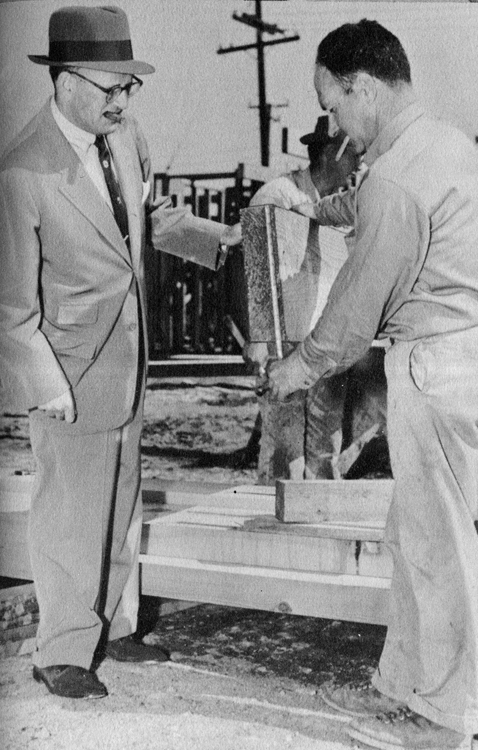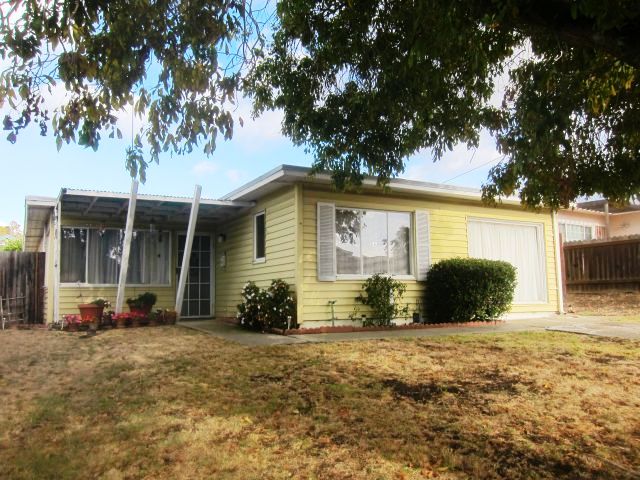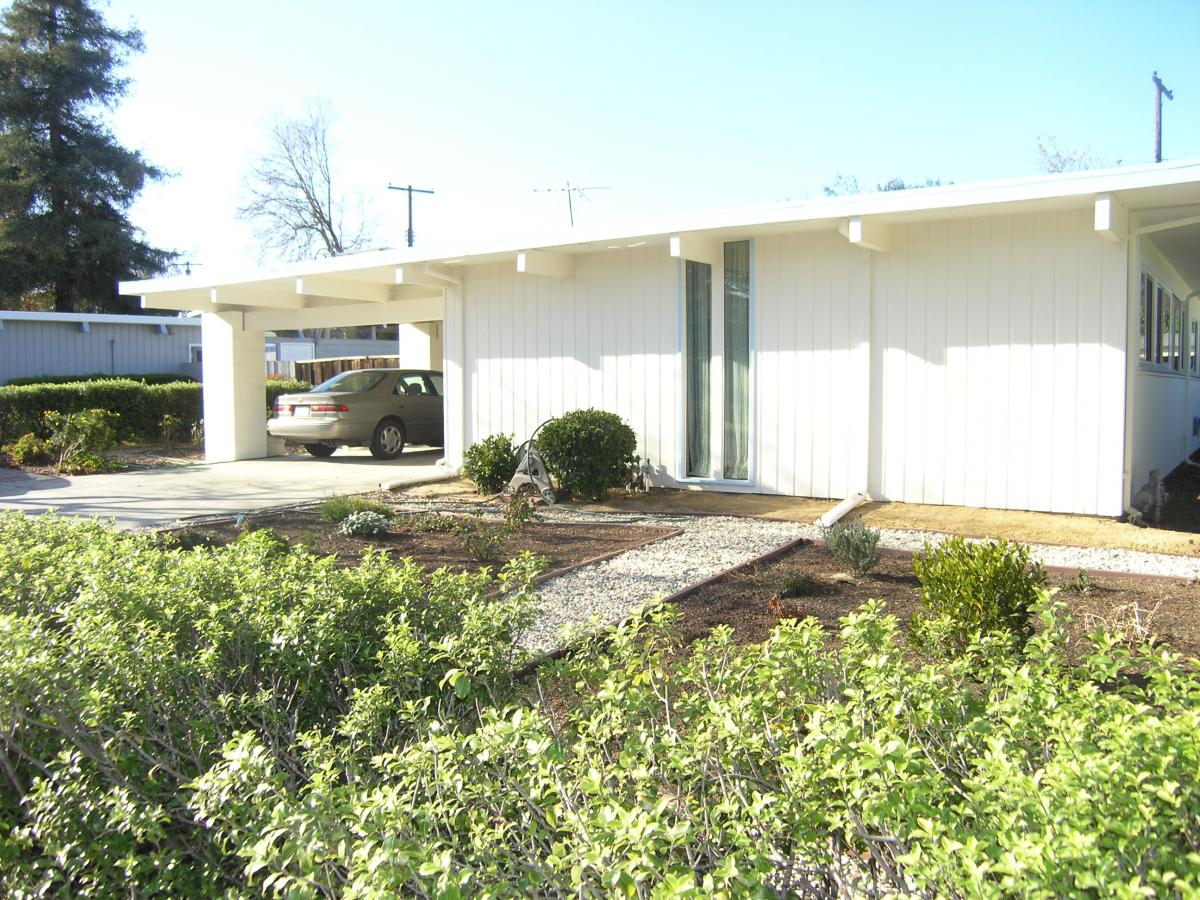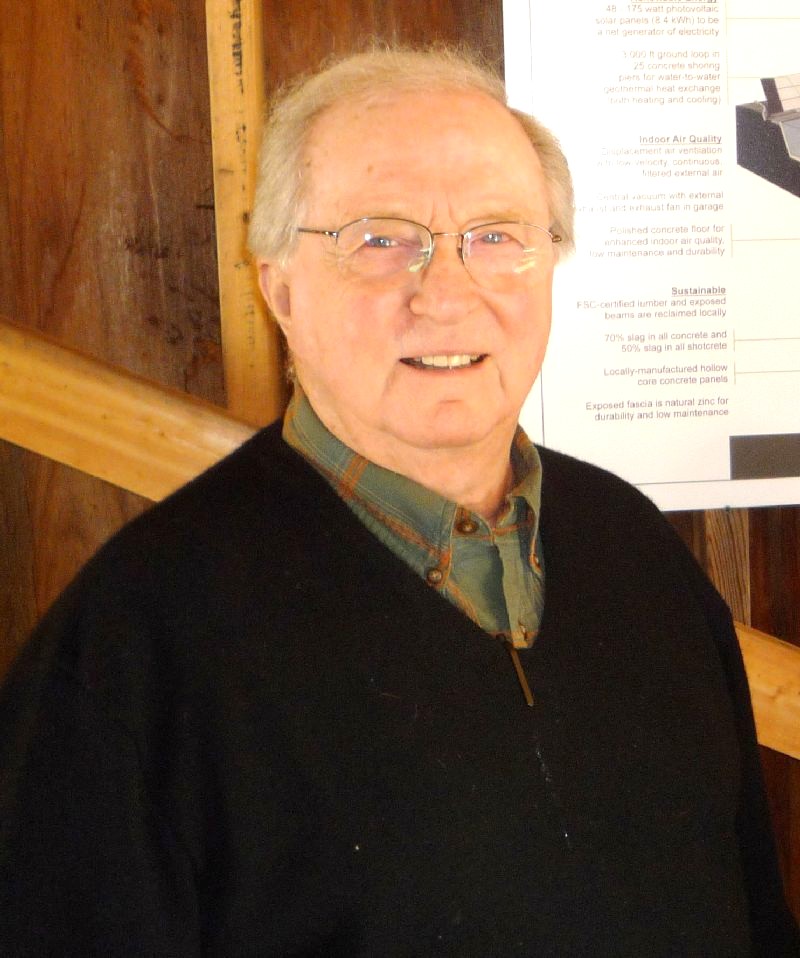
Building Your Eichler Bookshelf: Jerry Ditto
 |
|
|
How did a man from the streets of Manhattan, a man who’d spent his career in the poultry business, a man who “had never held a hammer, a saw, or wrench in his hand,” in the words of his son, go on to become America’s greatest builder of modern homes for middle class people?
A small (very small) bookshelf of titles has emerged over the past two decades that help answer this question, and others, that swirl around the legend of Joe Eichler.
The best known, compiled by Eichler Network’s publisher Marty Arbunich, and written by Paul Adamson, is ‘Eichler: Modernism Rebuilds the American Dream,’ from 2002. It is by far the most comprehensive.
But the first popularly published book to address the Eichler issue remains of real value, in large part because of the book’s central essay, which was provided by Joe’s son, the late Ned Eichler.
The 1995 book, ‘Design for Living: Eichler Homes,' was spearheaded by Ditto, who edited it along with Lanning Stern. It was published by San Francisco’s Chronicle Book.
 |
|
|
Ditto, who became a real estate broker because of his fondness for Eichler homes, helped pioneer the resurgence of interest in mid-century modernism with an Eichler newsletter and with this book. But he didn’t write much of it.
Sally Woodbridge, the eminent architectural historian, contributed an excellent introduction.
But the meat of the book is a personal essay about his father by the late Ned Eichler.
Anyone who has researched Eichler Homes knows that we have very little about the Eichler experience directly from the mouth or pen of Joe himself. Thankfully Ned was a thoughtful guy and a good writer.
Woodbridge, who apparently interviewed Jim San Jule, one of the founders of Eichler Homes, discusses how Eichler homes were rooted not just in the high art of Frank Lloyd Wright but in the seat-of-the-pants developer homes by Earl ‘Flat Top’ Smith, so called because his roofs were flat.
 |
|
|
She quotes Joe here, about his days following the poultry business when he rented a Wright house for himself and his family.
“I used to sit around that house wondering what I was going to do next. I admired Wright’s rich design, with its wooden walls and beamed ceiling, and I asked myself if such houses could be built for ordinary people,” Woodbridge has Joe saying.
But it was Smith who provided practical inspiration, selling Eichler two plans in 1947, which he used to build two houses in Sunnyvale.
“Smith had started out by building housing for wartime shipyard workers,” Woodbridge writes. “His houses had a concrete slab foundation at ground level and walls constructed according to the post-and-beam system. Their most prominent feature was their unconventional flat roofs.”
Ned hones in on the main mystery – what made Joe Eichler a homebuilder? His answer?
Joe wanted a new career, he was restless; and, surprisingly to the son, it had to do with aesthetics.
 |
|
|
“America abounds with stories of Jews, even very poor ones, especially those like my parents who were born here,” Ned writes, “immersing themselves in the arts, philosophy and political theory. This was not true of our family. My mother’s consuming interests were clothes, her golf club, and having drinks and dinner with club friends, after which cards were played.”
“The one manifestation of culture was my father’s reading of some contemporary proose fiction – Hemingway, Fitzgerald, Steinbeck, and Dreiser for example. And yet he never read Joyce, Faulkner, Lawrence, Dickens, Hardy, Melville, or Twain, among others. They owned no classical records and only listened to pop on the radio. My parents never attended the opera, the ballet, or the symphony, nor, until at least the late 1940s, did they go to an art gallery. My father occasionally quoted Shakespeare –'sufficient unto the day…' – but none of the Bard’s works was ever in our house. He also often sang bits of Gilbert and Sullivan.
“Despite this near absence of interest in the arts, Joe Eichler manifested a certain aesthetic sense. The clearest example was the way he dressed. He bought his clothes – suits and sport coats were often custom-made – and composed his outfits with great care. The manner was conservative – Brooks Brothers suits – but he had a decided flair. His model was Fred Astaire.”
 |
|
|
“He greatly admired athletes and dancers who were not merely successful but graceful, who performed well without apparent effort.”
But it wasn’t until the family settled into Frank Lloyd Wright’s Bazett house in Hillsborough, Ned writes, that Joe fell in love with modernism.
“It was clear … that my parents had become devotees of contemporary architecture: my father because it tapped some buried aesthetic yearning, and both of them because of their dislike of the traditional.”
The book, which is now out of print, is well illustrated, nicely laid out, and a real contribution to the historical tale of Joe Eichler and his homes.
- ‹ previous
- 84 of 677
- next ›



